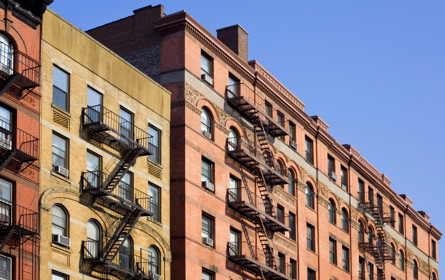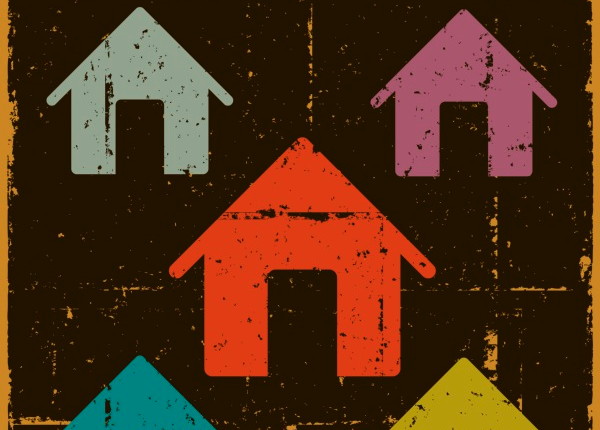
There's reason for optimism about ending homelessness as we know it in New York City.
Sure, the problem has never been worse. There are 57,000 homeless people daily in city homeless shelters or living on the streets, probably more. At least 22,000 of them are kids and, for them, brushes with homelessness may lead to a lifetime of consequences.
But now a loosely knit network of community-based groups, calling themselves United to End Homelessness, have joined to author and promote a detailed plan. They fittingly called it "A Roadmap to Ending Homelessness."
The ad-hoc group (which many members hope will become permanent) started with 13 desperate groups. It has now grown to be a union, this one with more than 130 organizations endorsing the platform.
The groups don't share just a single mission or business interest. Some operate shelters; success could put them out of business. Others develop or advocate for specific types of housing but have readily endorsed other approaches, too.
It's also not just groups that work on homelessness. The coalition includes faith groups, neighborhood organizations and a range of broad-based human service and social justice entities. It includes big names and small ones from every section of the city.
Their common commitment to ending homelessness is the unusual example of wide-ranging grassroots groups, sometimes separated by competing convictions or economic interests, working for a public goal they can agree on — ending homelessness.
Their 39-page plan sometimes reads like it was written by housing and homeless experts; other times like an emotional plea to do what's right. That's probably because — can you imagine this — it was written, reviewed and finally accepted by all 130 organizations.
The old saying is it was a big committee that came up with the camel. This one, though, wrote a real plan.
The timing isn't random. It comes just weeks before an election sure to shake up city policies for decades with a new mayor, all new citywide officials and several new City Council members, too.
Nicole Branca, deputy executive director of the Supportive Housing Network of New York, is a steering committee member. She says the group’s "is that this briefing book provides the next administration with the research, ideas and motivation to develop and start implementing a plan to end homelessness on day one."
This is no pie-in-the-sky plan from do-gooders. It's a war plan against homelessness that actually saves taxpayer dollars. Their research says it costs $36,000 a year to keep a family in shelter, but just $6,000 to prevent homelessness in the first place.
They say the city and state pay $78 a day for a person in shelter, $165 if they're in prison and $802 a day for a psychiatric hospital. The cost of subsidizing a homeless person in housing, including the supportive services they need, is $68.
The UEH platform proposes robust programs to build affordable housing for very-low income people, supportive housing for those who need it and an effective rent subsidy to move families from more expensive city shelters to less expensive permanent housing. They want a return to the city's historically successful targeting of a small portion of public housing for moving people out of shelters, too.
These ideas have worked elsewhere. Some were successful here in the past, but eliminated in budget cuts or policy changes. The UEH platform is not just a reprise of past programs, though; they detail specific strategies and evidence-based practices designed to make each program work.
Some ideas are brand new, at least here. One example, and a no-cost one at that, is creating an "Interagency Council on Homelessness," like the one the federal government uses effectively. "It calls out the key players that must participate cooperatively" to create the city's first-ever coordinated Interagency effort to end homelessness, according to Christy Parque, executive director of Homeless Services United and the generally recognized organizer of UEH.
The interagency council idea is designed to address what Parque calls "a decades-old problem that has plagued the city" where one agency or another serves as a feeder of newly minted homeless people without coordinated plans to fix the problem.
The city's Department of Homeless Services spends nearly $1 billion yearly on homeless shelters. That's not including the expenses of multiple shelter programs under other agencies. Prevention programs for those at-risk of homelessness, moving families very quickly to permanent housing and providing the numerous other pathways to stable housing the platform advocates is the right thing to do, but it isn't cheap. Reducing DHS's shelter costs could pay for most of it.
There are other cost efficiencies in ending homelessness, too. It's proven to cut health care and emergency room use at dramatic cost savings. It's proven to reduce public safety and jail costs, as well as reduce mental health system and other public service requirements.
There's also the promise of incalculable savings in human suffering, broken families, developmental and emotional delays for children and the second-chance opportunities it could bring to tens of thousands of New Yorkers.
"When homelessness absolutely cannot be prevented," the group says, "safe, decent appropriate shelter should be provided for those who need it," but as a temporary step on the pathway to permanent housing.
The only way to truly know the group’s roadmap would work in the real world is, of course, to try it. The plan offers diverse routes to housing for a diverse set of circumstances, is well researched and documented and promises far better outcomes at cost-effective and cost-savings prices.
I'm hardly an unbiased observer, but I'm all-in betting the roadmap can get us where we need to go.
Jeff Foreman is policy director at Care for the Homeless. Follow him on twitter at @JeffForeman2.










